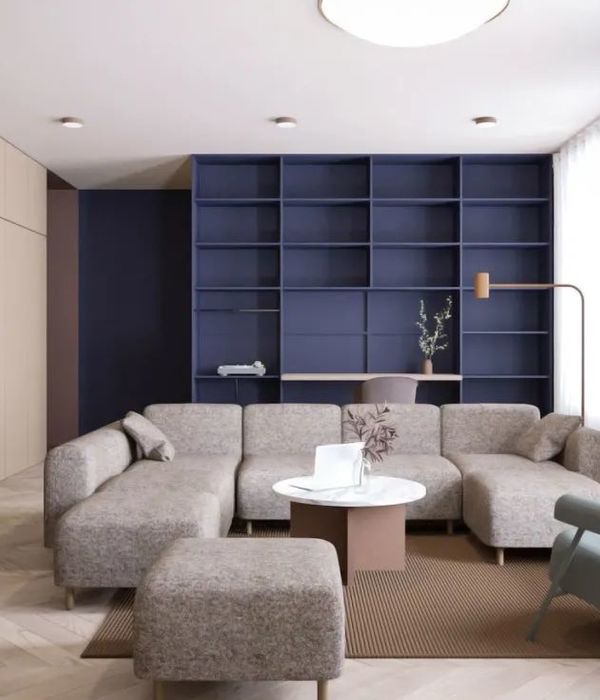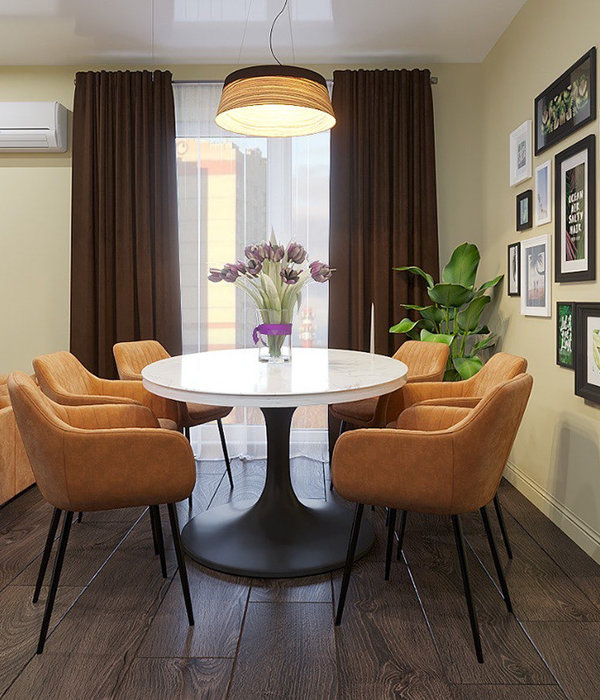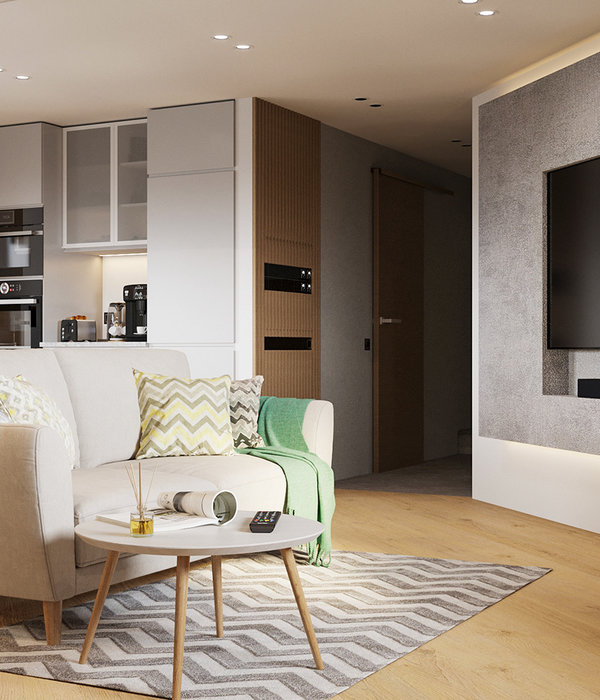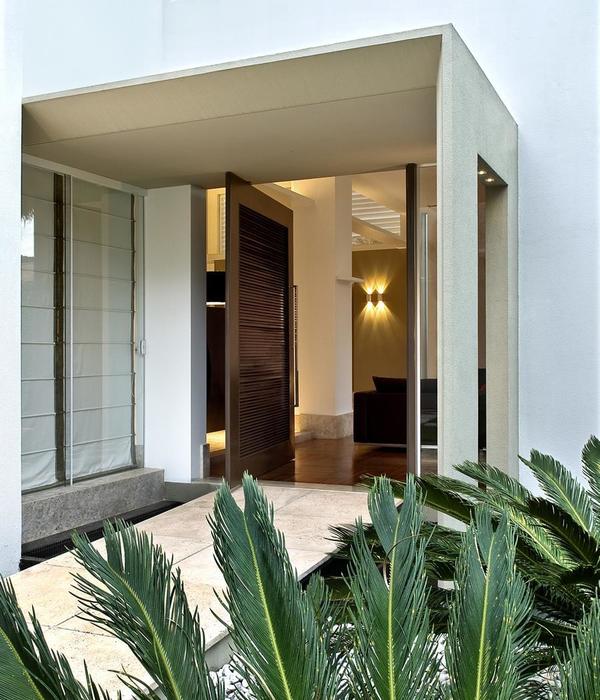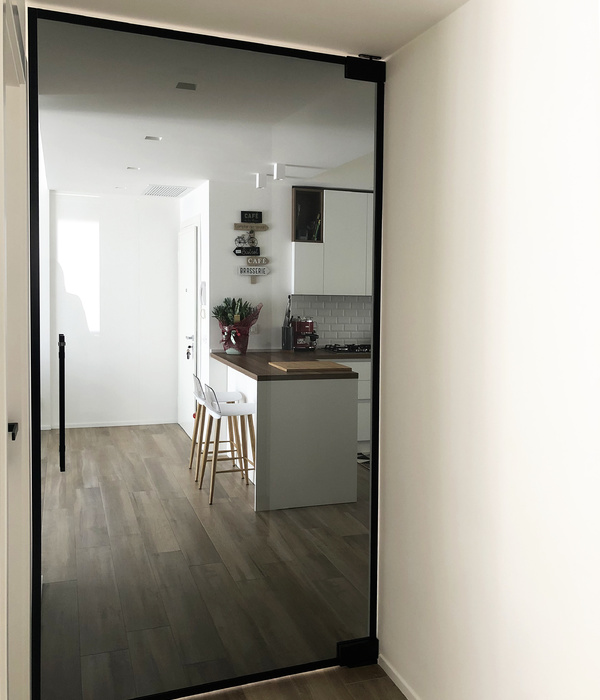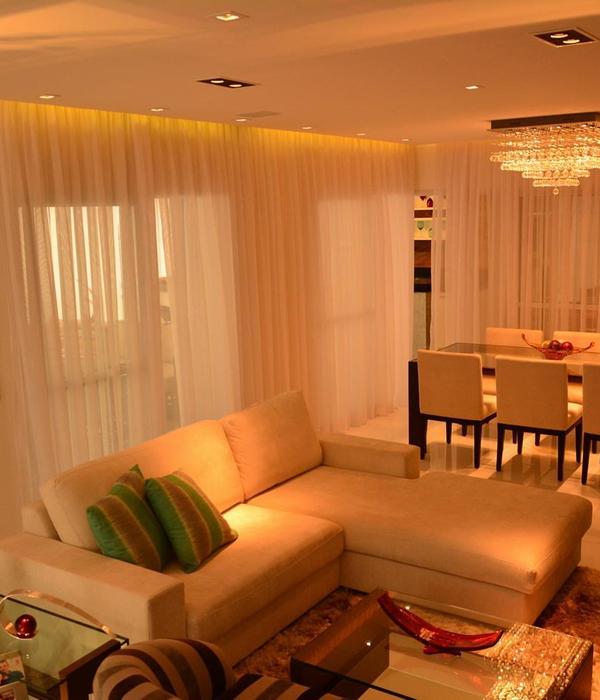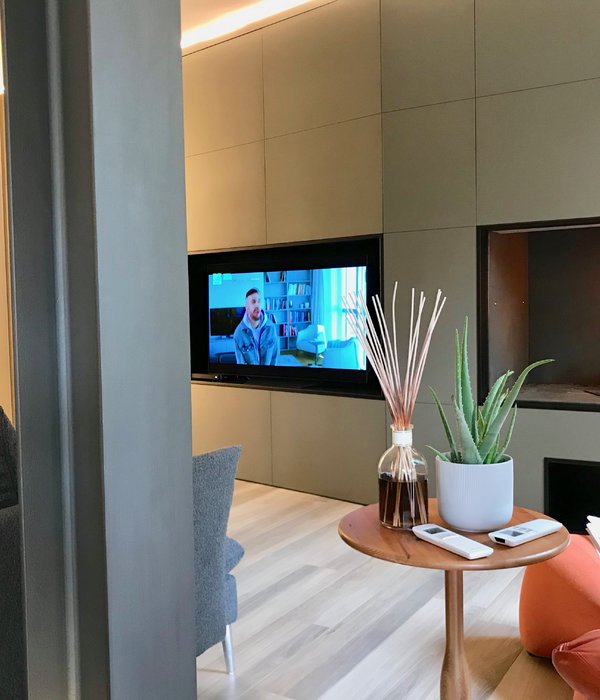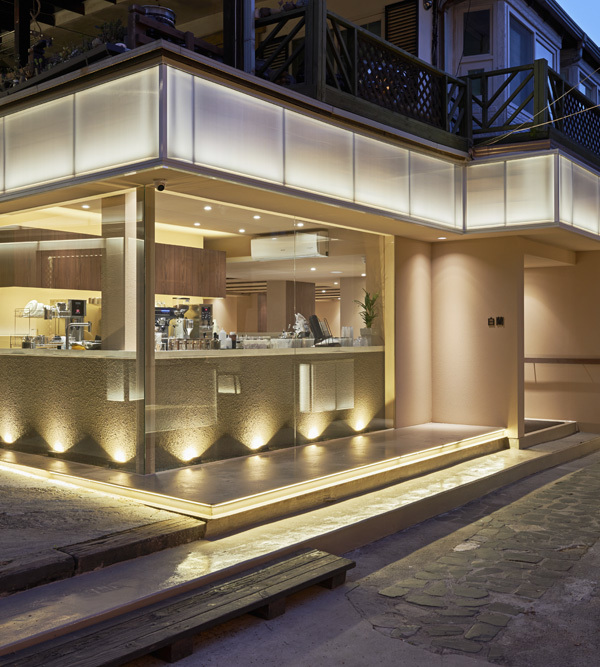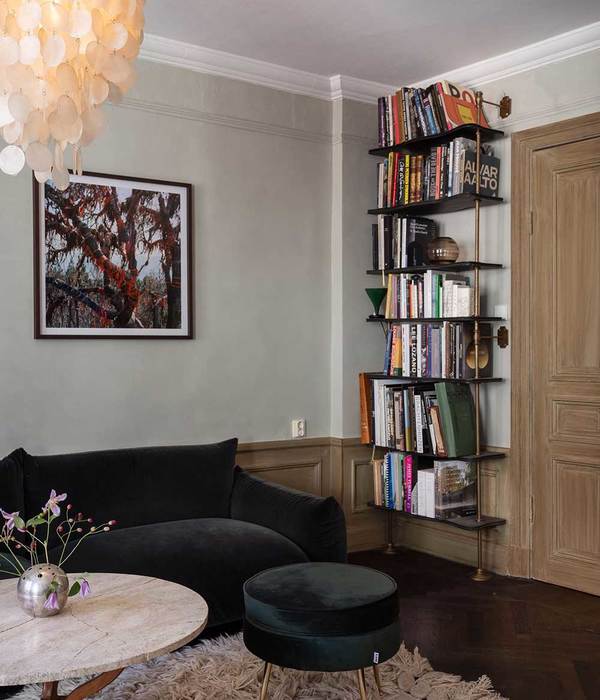Located in the mountain resort of Haute-Nendaz, this small wooden house and its workshop are nestled in a wooden area, planted some 50 years ago by the neighboring chalet’s owner’s ancestors. The project is set on the site opposite the family building, therefore densifying the existing plot by dividing it in two. The shift in the plan of the house and workshop creates a central area: an intimate garden, cut off from the rest of the world despite close proximity to the parental chalet and the neighboring summer camp building.
The exiguity of the plot sculpts the volumetry of the house while municipal regulations define its maximum height. The result is a simple monolith entirely covered on its five sides with a cladding made of rough larch strips from the region, allowing it to blend in with vegetal surroundings. Inside the house, a central staircase acts as the backbone of the project. It serves five half-levels, each composed of two distinct spaces. The so-called "public" parts occupy the lower floors, while the "private" parts are set on the upper levels.
This interior maze opens onto a succession of "small worlds", thus creating the impression of living in a place that is larger than it actually is. This quest for both spatial and material minimalism goes against the consumerism dictates of contemporary society. These spaces, although clearly divided, interact with one another as well as with their own exterior context, by means of sliding openings that frame chosen points of view.
From a construction standpoint, the entire skeleton - interior partitions, perimeter walls, slabs, roofing, and furniture - is composed of cross-laminated timber (CLT) made of locally sourced spruce. Prefabricated wood panels cover the entire house. The homogeneity in the materials used is a tribute to ancient mountain buildings. It creates a strong contrast with the outside vegetation while also providing visual relief from the succession of small spaces.
Technically, the heating and hot water are produced by a pellet boiler. Radiators placed under the furniture distribute the heat evenly in each room. A wood stove in the living room can take over the heat production from the boiler in winter. In summer, the trees bordering the plot create large areas of shade that help keep the building cool during seasonal heatwaves.
{{item.text_origin}}

